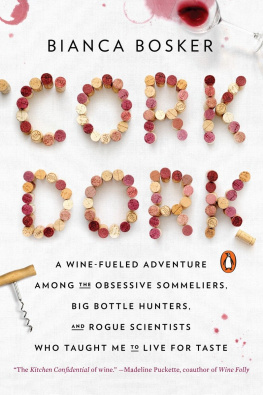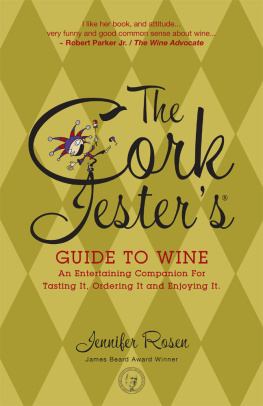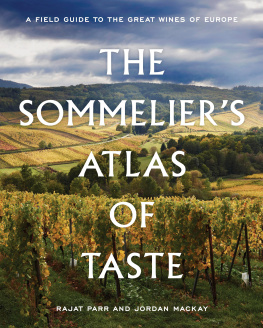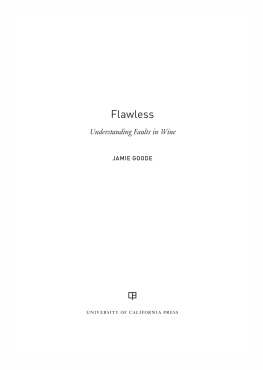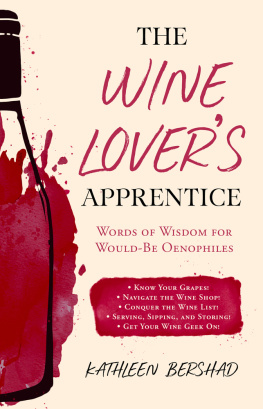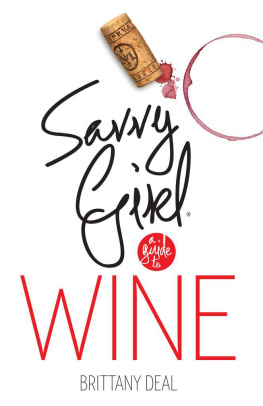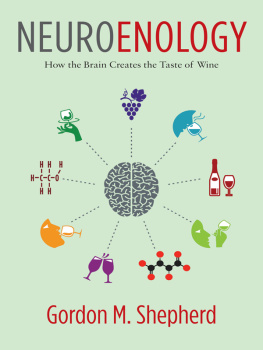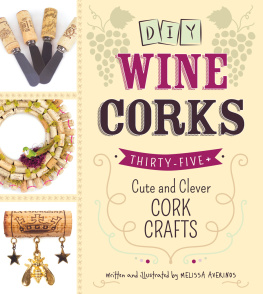Contents
Guide
Bianca Bosker is an award-winning journalist who has written about food, wine, architecture, and technology for The New Yorker online, The Atlantic, T: The New York Times Style Magazine, Food & Wine, The Wall Street Journal, The Guardian, and The New Republic. The former executive tech editor of The Huffington Post, she is the author of the critically acclaimed book Original Copies: Architectural Mimicry in Contemporary China (University of Hawaii Press, 2013). She lives in New York City.
Cork Dork
A Wine-Fuelled Journey into the
Art of Sommeliers and the Science of Taste
Bianca Bosker

First published in Great Britain in 2017 by Allen & Unwin
First published in the United States in 2017 by Penguin Books, an imprint of Penguin Random House LLC
Copyright Bianca Bosker, 2017
The moral right of Bianca Bosker to be identified as the author of this work has been asserted by her in accordance with the Copyright, Designs and Patents Act of 1988.
All rights reserved. No part of this book may be reproduced or transmitted in any form or by any means, electronic or mechanical, including photocopying, recording or by any information storage and retrieval system, without prior permission in writing from the publisher.
Every effort has been made to trace or contact all copyright holders. The publishers will be pleased to make good any omissions or rectify any mistakes brought to their attention at the earliest opportunity.
Allen & Unwin
83 Alexander Street
Crows Nest NSW 2065
Australia
Phone: | 612 8425 0100 |
Email: |
Web: | www.allenandunwin.com |
Paperback ISBN 978 1 76063 220 5
E-Book ISBN 978 1 76063 994 5
Internal design by Elke Sigal
For Matt
CONTENTS
INTRODUCTION
The Blind Tasting
PERFUME WAS THE FIRST TO GO, BUT ID BEEN EXPECTING THAT. Scented detergent followed, then dryer sheets. I wasnt sorry to give up raw onions or hot sauce. Not adding extra salt was rough at first, tolerable for a bit, then miserable. When I went out to eat, everything tasted like it had been doused in brine. Losing Listerine wasnt so bad; replacing it with a rinse of citric-acid solution and watered-down whiskey was. I went through a dark phase when I cut out coffee. But by that point, I was used to being a little slow in the morning. Daytime sobriety was ancient history, along with all hot liquids, the enamel on my teeth, and my Advil supply.
All this was part of the deprivation routine I cobbled together at the advice of more than two dozen sommeliers, who, over the course of a year and a half, became my mentors, tormentors, drill sergeants, bosses, and friends.
You might be wondering why Id spend eighteen months getting coached by a bunch of pinstripe-wearing bottle pushers. After all, arent sommeliers just glorified waiters with a fancy name (somm-el-yay) who intimidate diners into splurging on wine?
That was pretty much how I saw them, too, until I handed myself over to an elite clan of sommeliers for whom serving wine is less a job than a way of life, one of living for taste above all else. They enter high-stakes wine competitions (sometimes while nine months pregnant), handle millions of dollars in liquid gold, and make it their mission to convince the world that beauty in flavor belongs on the same aesthetic plane as beauty in art or music. They study weather reports to see if rain will dull their noses, and lick rocks to improve their taste buds. Toothpaste is a liability. They complain about that new glass smell, and sacrifice marriages in the name of palate practice. One master sommelier, whose wife divorced him over his compulsive studying, told me, Certainly, if I had to choose between passing my exam and that relationship that I had, I would still choose passing my exam. Their job depends on detecting, analyzing, describing, and accounting for variations of flavor in a liquid thats compound-for-compound the most complicated drink on the planet. Theres hundreds and hundreds of volatiles. Theres polysaccharides. Theres proteins. Amino acids. Biogenic amines. Organic acids. Vitamins. Carotenoids, an enology professor explained to me. After blood, wine is the most complex matrix there is.
With that obsessive focus on minute differences in flavor comesactually, I wasnt sure what, exactly. At least, not when I started. I came to these sommeliers wanting to know what life was like for them, out at the extremes of taste, and how theyd gotten there. It turned into a question of whether I could get there tooif any of us couldand what would change if I did.
Some words of warning:
For you, a glass of wine might be your happy place. The thing you reach for at the end of a long day, when you switch off a part of your brain. If you want to keep it that way, then stay far, far away from the individuals in this book.
On the other hand, if youve ever wondered what all the fuss is about wine, whether theres really a discernible difference between a $20 and $200 bottle, or what would happen if you pushed your senses to their limitswell then, I have some people Id like you to meet.
______
Spend enough time in the wine world, and youll find every connoisseur has a story about the bottle that launched their obsession with wine. Usually, their Saul-on-the-road-to-Damascus moment arrives via, say, a 1961 Giacomo Conterno Barolo sipped in a little restaurant in Piedmont, Italy, overlooking the Langhe hills, the beech trees swaying as a gentle fog curls up from the valley floor. Its something of a formula: Europe + natural splendor + rare wine = moment of enlightenment.
My wine epiphany came slightly differently: at a computer screen. And I wasnt even drinkingI was watching others do it.
At the time, I was a technology reporter covering the Googles and Snapchats of the world for an online-only news site, and I was doing most things via screens. Id spent half a decade on the tech beat, writing virtual articles about virtual things in virtual universes that couldnt be tasted, felt, touched, or smelled. To me, immersive meant websites with really big digital photos, and the words it smells could only ever refer to a problemBO, a coworkers lunch, spoiled milk in the office fridge. I once made someone do a story titled How to Take a Vacation on Google Street View, as if scrolling through blurry photos of Hawaiis Waikoloa Village could be a reasonable substitute for lounging around with a Mai Tai in the late afternoon sun.
One Sunday evening, my then-boyfriend-now-husband dragged me to a restaurant on the lower rim of Central Park. It was the type of place that prides itself on applying to food what J. P. Morgan purportedly said about yachts: If you have to ask the price, you cant afford it. I would usually have steered clear of this place for fear of bankruptcyfinancial and possibly spiritualbut we were going to meet his client Dave. And Dave liked wine.
I liked wine the same way I liked Tibetan hand puppetry or theoretical particle physics, which is to say I had no idea what was going on but was content to smile and nod. It seemed like one of those things that took way more effort than it was worth to understand. Dave collected old wines from Bordeaux. Id go so far as to say I generally preferred wines from a bottle, but I certainly wouldnt have turned up my nose at something boxed.


